
Citric Acid Anhydrous Powder
78 Per Kilogram
500 Kilogram (MOQ)

L Plus Tartaric Acid Powder
Get Price Quote
100 Kilogram (MOQ)
Best Deals from Acid Powder

Salicylic Acid Powder
Get Price Quote

Boric Acid Powder
Get Price Quote
Boric Acid Powder

Citric Acid Powder
Get Price Quote
1 Ton (MOQ)
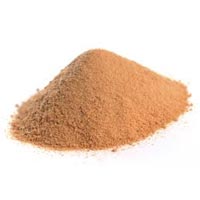
Tannic Acid Powder
800 Per 500 gm
500 Gram (MOQ)
Tannic Acid Powder is a shiny yellowish to light brown powder that is made of barks and fruits of different plants. Our offered Tannic Acid Powder is formulated by our team of experienced chemical engineers. We stringently test the Tannic Acid Powder to make sure that it is pure, effective, safe for use, and carefully packed.
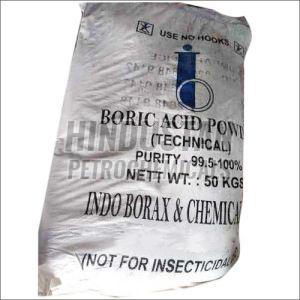
Boric Acid Powder
98 Per Kilogram
100 Kilogram (MOQ)

Uric Acid Churna
300 Per Pack
1000 Pack (MOQ)
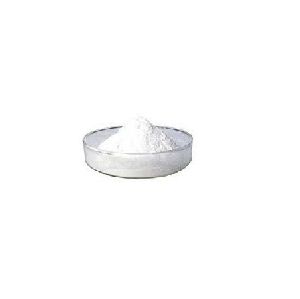
Picolinic Acid Powder
Get Price Quote

Sodium Acid Pyrophosphate Powder
110 Per Kilogram
Application : Sodium Acid Pyrophosphate is used in leather treatment to remove iron stains Sodium Acid Pyrophosphate is widely used globally in food industry for baking reaction purpose SAPP is also used to stabilize the solution of hydrogen peroxide against reduction SAPP is used in petroleum industry as a dispersant in oil well drilling muds SAPP also has a wide use in dairy and poultry processes
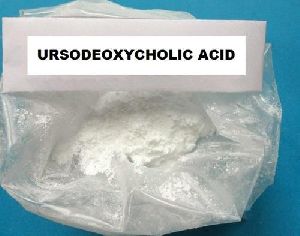
Ursodeoxycholic acid Powder
18,000 Per Kilogram
1 Kilogram (MOQ)

lactic acid powder
20 - 35 Per Kilogram
Lactic Acid Powder lactic acid price, lactic acid powder, lactic acid 80% food grade Product Description ItemStandard Appearancecolourless to yellow liquid Assay88.3% Fresh color40 Stereo chemical purity 95% Citrate, Oxalate, Phosphate, or TartratePassed test Chloride < 0.1% Cyanide < 5mg/kg Iron < 10mg/kg Arsenic < 3mg/kg Lead < 0.5mg/kg Residue on ignition < 0.1% SugarsPassed test Sulfate < 0.25% Heavy Metal

Sodium Acid Phosphate Powder.
102 Per Pack(s)
40 Pack(s) (MOQ)

Boric Acid Powder
Get Price Quote
The company is a proud manufacturer of first-rate Boric Acid Powder. Besides Boric Acid Powder, we also manufacture and supply Boric Acid and H3Bo3. We have ceaselessly probed to renovate our products. Considering the kind of customer base we have, we can state that our probation hasn’t been in vain.

Citric Acid Anhydrous Powder
Get Price Quote
500 Kilogram (MOQ)
Citric Acid Anhydrous is a white crystalline powder. Known for its sour taste, it is widely used as an acidulant in the food and beverage industry. Its applications extend to cosmetics, pharmaceuticals, and household cleaners. Citric Acid Anhydrous plays a crucial role in providing tartness and acidity to a variety of products.
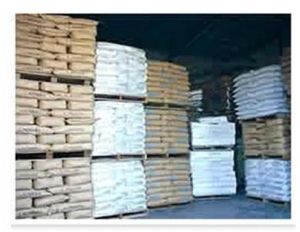
Adipic Acid powder
90 Per Kilogram
500 Kilogram (MOQ)

Methacrylic Acid Copolymer Powder
Get Price Quote
Methacrylic Acid Copolymer Powder is a white dispersible powder. We are an experienced name, which is engaged in manufacturing, supplying and exporting Methacrylic Acid Copolymer Powder from Maharashtra, India. The formulation and processing of our Methacrylic Acid Copolymer Powder are done using highly advanced techniques by following the set industry standards. The final dispatch of the powder is done using those shipment modes that ensure its timely and prompt delivery.

Phosphorus Acid Powder
4,750 Per Bag
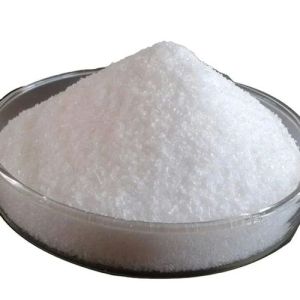
Mono Chloro Acetic Acid Powder
50 - 80 Per Kilogram
50 Kilogram (MOQ)
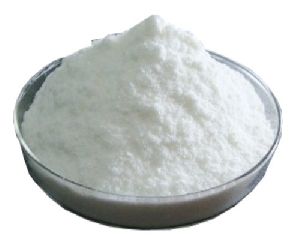
Naphthalene Acetic Acid Powder
1,400 - 2,000 Per Kg
1 KGS (MOQ)
NAA (a synthetic auxin) is used in many commercial rooting products. It is used to promote rooting from stem and leaf cuttings. NAA is also used in plant tissue culture work. NAA has been shown to greatly increase cellulose fiber formation in plants when paired with another phytohormone called gibberellic acid. Because it is in the auxin family it has also been understood to prevent premature dropping and thinning of fruits from stems. It is applied after blossom fertilization. Increased amounts can actually have negative effects however, and cause growth inhibition to the development of plant crops. It has been used on many different crops including apples, olives, oranges, potatoes, and various other hanging fruits. In order for it to obtain its desired effects it must be applied in concentrations ranging from 20–100 μg/mL.

Acid Grade Fluorspar Powder
70 - 75 Per Kilogram
50 Kilogram (MOQ)
Acid Grade Fluorspar is used for production of E7018 type of electrode and also for certain Stainless Steel Electrodes. Acid Grade Fluorspar is also used for making of SMAW Fluxes.

Amino Acid Powder
Get Price Quote
Zinc Carbonate is Inorganic compound. It is a white amorphous, odourless powder. Zinc Carbonate is not soluble in water. It is soluble in dilute Hydrochloric Acid & Acetic Acid. Zinc is a naturally found in the earth’s crust and is an inherent part of our environment. Zinc is present not only in rock and soil, but also in air, water and the biosphere. Plants, animals and humans contain zinc in their bodies. The average natural level of zinc in the earth’s crust is 70 mgkg (dry weight), ranging between 10 and 300 mgkg (Malle 1992). In some areas, zinc has been concentrated to much higher levels by natural geological and geochemical processes (5-15% or 50,000-150,000 mgkg). Such concentrations, found at the earth’s surface and underground, are being exploited as ore bodies Centuries ago zinc was discovered in the metallic form, its ores were used for making brass and zinc compounds and also for healing wounds and sore eyes. It is believed that the Romans first made brass in the time of Augustus (20 B.C. – 14 A.D.). In the 13th century Marco Polo described the manufacture of zinc oxide in Persia. By 1374, zinc was recognized in India as a new metal – the 8th metal known to man at that time. At Zawar in India, both zinc metal and zinc oxide were produced from the 12th to the 16th century. Zinc metal was used to make brass, and zinc oxide served medical purposes.

Amino Acid Powder
62 Per Kilogram
5000 Kilogram (MOQ)

Boric Acid Powder
110 Per Kilogram

Muscleblaze BCAA 6000 Amino Acid Powder
1,590 Per Pack
description muscleblaze bcaa is a powerful intra-workout supplement which provides 6000mg of bcaas per serving. Branched chain amino acids play a vital role in muscle synthesis and provides faster recovery post a long and heavy-duty workout. Each serving of muscleblaze bcaa 6000 has l-leucine, l-isoleucine, and l-valine in the ratio of 2:1:1 which supply the depleted muscles with the vital amino acids which helps muscle synthesis and prevents catabolism. Muscleblaze bcaa 6000 has an instantized formula so that it mixes instantly with cold water without leaving any lumps behind. benefits branched chain amino acids are a special group of amino acids which are used during weight trainings and active sports to support less muscle fatigue, faster recovery, and efficient protein absorption. Bcaas include l-leucine, l-isoleucine, and l-valine. protein synthesis: bcaas increase muscle protein synthesis by providing an anabolic state and preventing catabolism. Protein synthesis stimulates insulin production which allows muscle cells to use it as energy. energy production: the bcaas produce glucose and acetyl-coa which is a precursor of fatty acids. As a result, all three bcaas produce high amounts of atp (energy molecules) while maintain the energy and glucose levels during workout. regulates leptin: bcaas stimulate the synthesis of hormone leptin.10 which is involved in the regulation of metabolism, weight, and appetite. delay fatigue: bcaas transport more blood through brain and decreases the production of serotonin, thereby lowering the mental and physical fatigue. reduced muscle loss: bcaas have anti-catabolic properties as they prevent protein breakdown and muscle loss during the low-caloric intake diet. directions for use mix one heaping scoop (8g) with 200-250ml of water or your favorite beverage. Follow your trainer’s recommendations. It is recommended to take plenty of water during workout after consuming bcaa 6000. for beginners: 1 scoop during workout for serious bodybuilders: 2 scoops per day ingredients branched chain amino acids (l-leucine, l-isoleucine, l-valine), antioxidant (ins 300), acidity regulator (ins 330) user guide bcaas can be taken at any time during the day, preferably on an empty stomach to avoid competition for absorption with other amino acids. Although the most beneficial time to take the bcaas are directly before or just after training. One study used approximately 3400 mg of leucine for a 170 pound man for recovery and tissue synthesis for lean individuals needing to build muscle. This study used whey protein mixed with extra leucine. The diet consisted of 55% carbs and 15% proteins with added leucine taken throughout the day. Another study indicated the use of bcaas with approximately 50% leucine as the base with whey proteins at 1.26 grams per kilo, which is about 107 grams per 170 pound individual. here is a snap shot of dose per weight and individual body weight. body weight in pounds bcaa’s total grams proteins total grams 150 5650mg 94 grams 170 6400mg 107 grams 200 7500mg 125 grams 250 9400mg 156 grams 300 11300mg 187 grams many authorities agree that proper protein supplementation should be at 1.3-1.6 grams per kilogram of bodyweight daily for strength training athletes. Some studies indicate that 5.6 grams of bcaas, two times a day improved weight lifting recovery and improved muscle stability. Another study indicating 3.6 grams, two times a day improved the recovery of rugby players. Ultimately, the dosage pattern shown above should be a good rule of thumb. buying guide what are bcaas? amino acids are the building blocks of proteins in our body. Amino acids are also indirectly responsible for muscle growth in our body, because all muscles are made of proteins. Research has revealed that certain amino acids, specifically the branched-chain amino acids (bcaas), help prevent fatigue and maintain muscle mass and strength during times of physical stress, even during intense workouts. The bcaas, namely leucine, isoleucine and valine are the three essential amino acids. The ‘branched chain’ designation refers to their unique chemical structure that cannot be replicated inside our body; hence they must be obtained from our diet. The combination of these three bcaas makes up approximately 1/3 of the skeletal muscle in the human body. branched chain amino acids have a non-continuous link of carbon bonds. That means, the bcaas have one carbon atom that is not in a linear fashion that makes it a branched point. All branched chain amino acids have one or more points of non-continuous links. The other five branched chain amino acids are phynelalanine, methionine, tryptophane, threonine and lysine. Some authorities suggest that there are a total of ten essential amino acids that include arginine and histadine. Other studies suggest that arginine and histadine are conditionally essential. The branched chain amino acids make up to 40% of the daily requirements of essential amino acids. at one point, the safe levels or the rda (recommended dietary allowance) for bcaas were 20% of the total amino acids required for daily needs. The established values for amino acids come from the fao (food and agriculture organization) and the national research council (nrc). The fao and the nrc are the two bodies that are concerned with the studies related to the growth and development of infants and children. After closer evaluation of human needs, the requirement of bcaas went up dramatically to the current levels of 40%. The changes in rda levels and the bcaas have changed dramatically in the last years. a number of studies that established the levels for bcaas involved individuals fasting and living a normal lifestyle, and not in the quest to achieve more muscle mass or energy. Athletes are commonly one of the primary groups using bcaas in supplemental forms. metabolism of bcaas general metabolism proteins are the foundation of amino acids. In order to render amino acids form protein molecules, proteins must be digested via the gastrointestinal tract, the gi. This involves the stomach, the hydrochloric acid that is secreted inside it, its reaction with large protein molecules; then the secretion of protease inside the pancreas that helps in the breakdown of longer amino chains; and finally the breakdown into smaller fragments in the small intestine to form free amino acids and some small peptides containing the enzyme peptidease. Most amino acids are then subjected to transportation to the liver and undergo further metabolism in the viscera (splanchec) area and the stomach mucosal area. free bcaas are a little different in a way that they are directly carried by the blood through the liver. Whereas, some are exchanged in the intestinal viscera and eventually mix up in the bloodstream directly. Almost all amino acids can be degradated and broken down in the liver effectively with the exception of bcaas. The liver oxidizes the bcaas from their converted form called oxo-keto acids. This means that the basic bcaas are not metabolized by the liver directly. Ultimately, large percentages of the bcaas are oxidized by the muscle tissue and some by fat (adipose) tissue. But a large percentage of oxidation occurs in the muscle tissue (organ specific muscle). exercise and bcaas six amino acids are taken by the muscle tissue for energy that includes alanine, aspartate, glutamate and the bcaas. While the bcaas have the greatest metabolic potential for energy use in the muscles, muscle tissues have 60% of the specific enzymes needed for oxidation (burning) of amino acids for energy. In essence, the muscle is designed to burn bcaa amino acids for energy. During exercise, the body uses bcaas as energy. The longer and harder the workout, the more bcaas that are used by the muscles for energy. It is estimated that, 3% to 18% of all workout energy is provided by the bcaas. the bodies need for bcaas, especially leucine, is 25 times greater than the free amino pool or the readily available leucine. The free amino pool is free or single amino acids found in the skeletal muscle, blood and cell plasma.(75% is in muscle). Free amino acids are amino acids that are not bound, but are ‘waiting’ to be used. Because of the great need for leucine, the body must catabolise or breakdown the muscle for the leucine needed during a workout. Bcaas can also be converted to alanine or glutamine inside the muscle. Alanine and glutamine can go through glyconeogenesis in the liver to form glucose. Ultimately, leucine is one of the major ‘foods’ for the muscle during workouts. supplemental use of bcaas bcaas when consumed in free form, bypass the liver and the gut tissue and go directly into the blood stream. Supplemental consumption of bcaas quickly elevate the blood supply and affect the circulating bcaa levels. This is especially true when there are low levels of glycogen or stored sugars. Bcaas supplement have shown beneficial effects when taken before or after workouts. While large dosages of single leucine are not recommended by some authorities, the use of bcaas might be best in combination with other supplements. endurance and fatigue prevention of fatigue with the help of bcaas in athletes can occur in two primary ways. First, the loss of atp or cellular energy occurs with the loss of stored glucose in the form of glycogen. Atp levels are maintained by the bcaas degradation and fatty acid utilization after glycogen depletion. The effect of bcaas as energy is approximately 3-18% and possibly more, depending on the duration or the intensity of the workout. Muscle tissue can oxidize leucine for energy or convert leucine into glutamine or alanine for blood energy. Glutamine or alanine can be converted into glucose. Also isoleucine and valine can be converted to form krebs cycle components for energy as well; making all three bcaas a valuable source of muscle energy. the second primary fatigue fighter for bcaas is seen with the bcaas ability to prevent central fatigue in the nervous system. Central fatigue happens with the uptake of tryptophan by the brain, increasing the levels of serotonin. Serotonin increases tiredness and fatigue, demanding the rest to the brain immediately. Bcaas inhibit the brains ability to uptake tryptophan. for endurance athletes, the use of bcaas before and after workout has proven to be effective in reducing total time taken for the completion of events. In other words, it has increased the performance abilities. Cyclists and marathoners have shown positive effects when using bcaas immediately before events and during an event. Improvements in mental performance and reduction in performance time have been noted. The reduction of lactic acid levels have been shown in some studies (reduced burn). Loss of muscle mass has also been reduced. Two weeks of supplementation has shown improvements in time-trial of cyclists and other trained athletes. It is also noted that some studies indicated no improvements. Some studies however, have compared bcaas to glucose, while some formulas today have the two together, a dosage of 3-20 grams a day, taken before, during and after workouts. Most studies indicated the consumption of 7 to 12 grams during long events mixed into carbohydrates solutions for best results. muscle building and bcaas recovery from a workout as well as increased energy can be accomplished with the use of bccas. During exercise, when muscle contacting tissues are being degradated for energy, non contractile muscle proteins decrease in catabolism and inversely with the reduction of exercise. In addition, the breakdown of contractile tissue increases during post work recovery. So increasing the usage of bcaas before and especially after workouts has been a norm for years, producing a ‘muscle sparing’ effect. In addition, the stimulation of muscle synthesis and the use of bcaas have required large dosages of these three amino acids. Most researches point to leucine as the amino acid that stimulates this action when consumed with other supplements or as a part of a meal. recovery bcaas have been used for muscle recovery extensively. Exercise recovery and the degradation of proteins are reduced with the use of bcaas, especially leucine. As noted above, leucine has a signaling effect on key enzymes for protein synthesis, having an anabolic effect on human muscles. Bcaas usually are coupled with insulin and igf-1. fat loss recent research has confirmed that leucine increases the adipocytes (fat cells) release of fats for energy. In addition, leucine been proved to be a key factor in the prevention of muscle tissue degradation during dieting in diabetic situation. Most dieting solutions increase the loss of lean tissue and increase muscle loss. Having adequate leucine and protein will prevent this loss of muscle during dieting. safety and precautions studies related to experimentation of higher dosage of bcaas in rats - an excess of 15 grams per kilo gram of body weight, have shown to decrease b3 blood levels and tissue levels. For a 100 pound man that would be about 750 grams. Based on the dosages as listed above, it is always good to make sure that enough b-vitamins the supplement program maintains a high protein level in the body. Acceptable dosages seem to be around 4-20 grams, depending on body weight and event of use. faq's who should take them? bodybuilders, weight lifters, and other athletes who weight train regularly. Endurance athletes who regularly compete in aerobic events, such as running, cycling, or swimming, will also benefit from supplementing withbcaas. do I get enough bcaas from the proteins I get? dairy and red meat contain the greatest amounts of bcaas. Other sources include whey protein and egg protein. Although they are present in all foods containing protein, there is a definite advantage to supplementing your diet with additional bcaas. This is especially valid before or after training in order to obtain the greatest benefit that these exceptional amino acids have on muscle building. how do bcaas help me if I am dieting? bcaas can be used as fuel (energy) by the body like mentioned above so if you are restricting your calories and your body needs energy or fuel it goes to your muscles and your fat to get that fuel. we obviously want it to go after the fat, but we don't want it to go after the muscle. by providing your body with bcaas throughout the day will allow it to use those for fuel if needed and prevent your body from getting the bcaas from your muscle, which can cause loss of lean muscle. how long do I have to take it? if you do not get in enough protein through regular food or other supplements then it is a good idea to continue to use bcaa particularly if you are dieting or trying to build lean muscle through strength training. what if I was a pregnant woman, lactose intolerant or diabetes patient? for a lactose intolerant person, bcaas would be a very safe and highly effective supplement. It is devoid of lactose and it only constitutes branched-chain amino acids. For pregnant women and diabetes patients, I would rather suggest consulting to a doctor or health counselor before taking it. what kind of results should I expect from bcaas? you can expect to see an improvement in the effectiveness of your training sessions and reduce muscle soreness and fatigue. bcaas can improve nitrogen retention so that your body stays in an anabolic state for lean muscle development, which results in prevention of devastating lean muscle tissue breakdown. will it bother my stomach? no it should not bother your stomach. we consume amino acids every day with protein meals and these branched chain amino acids are of the same chemical design. Bcaas are just amino acids with nitrogen retention power.

Boric Acid Powder
Get Price Quote
The Boric Acid Powder is also known as hydrogen borate and happens to have wide applications ranging from mild medicines to insecticides. Owing to its antiseptic qualities, it is one of the largest used product in pharmaceutical industries. We take orders for the bulk quantity of the powder, which we offer at competitive prices. Also, we assure a timely delivery of the product.
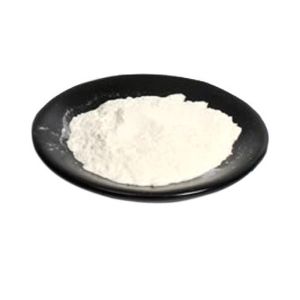
99% Tannic Acid Powder
900 - 1,000 Per Kilogram
500 K (MOQ)
It is a naturally occurring plant polyphenol and can be found in practically all aerial plant tissues. Tannic acid was historically used for the treatment of diarrhea, topically to dress skin burns and rectally for treatment of unspecified rectal disorders.

Peracetic Acid Powder (Per-Sept)
Get Price Quote
Per-sept(powdered peroxygen system for rapid cold chemical decontamination of medical devices) we are among the first company to manufacture peracetic acid in powder form in asian market, peracetic acid is a liquid product. We had made it in powder form first time in india . Per-sept is an aldehyde free powdered peroxygen system for cold sterilisation of reusable as well as heat-labile dental & medical instruments or devices (like dental surgery, respiratory tubes, endoscopes, bronchoscopes, laparoscopes and anaesthesia equipments) in hospitals, clinics & healthcare applications (podology). We can offer you some innovative disinfectant products like peracetic acid powder. Its a generic version of du---t roduct pera---e. Lt have both disinfectant as well as oxygen releasing agent, as it releases oxygen & peracetic acid.. Synonym: perasafe active ingredients blend of inorganic peroxygen compounds, salts, buffers, descalants, detergents and stabilizers. 2% of stock solution is equivalent to minimum of 0.1% peracetic acid wv & minimum of 0.1% hydrogen peroxide wv what's the innovation? 1. Unlike other liquid peracetic acids here you don't require any activator..... One single package only.... 2. Unlike liquid peracetic acids which is there in market.... This product is in powder form..... So, no corrosion... No handling & transportation issue, no spillage issue... 3. Just make the stock solution at end user level & use it... 4. It acts as both disinfectant as well as oxygen releasing agent. As it releases oxygen & peracetic acid. Besides, we can supply.... Bromine in powder form (with 5% active bromine content)....... Liquid bromine is a common product..... We had done bromine powder first time in this part of the world...

Humic Acid Powder
Get Price Quote

Citric Acid Powder
46 Per Pack